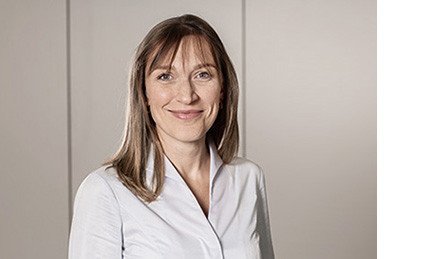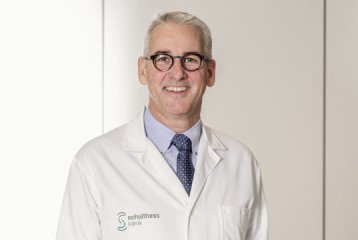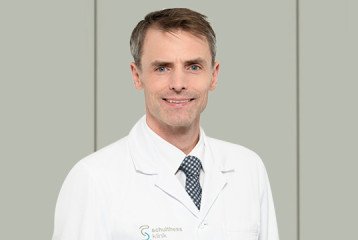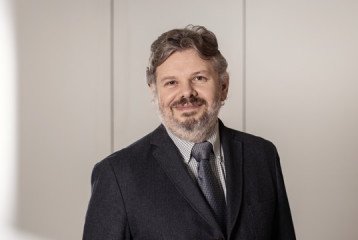News Complications following surgery for spinal curvatures: searching for the cause
Long-segment fusion operations may be the best solution for treating spinal curvature in adults, but why do some patients experience mechanical complications after this kind of surgery? Our research team is on the case: working with ETH Zurich as part of the European Spine Study Group, it is looking into the causes of this with the aim of further improving and tailoring the treatment options available to these patients.
Wear-related spinal curvatures are common in adults and can have a severe impact on their quality of life. The treatment options are very diverse, which makes it all the more important to pinpoint the right treatment for each individual patient. The European Spine Study Group (ESSG), which includes Schulthess Klinik, has made it its mission to help these patients using a science-based approach.
Background information on the study
In certain cases – after conservative (non-surgical) treatment – a surgical procedure is the only option left for older people with a pronounced deformity and curvature of the spine (adult spinal deformity, or ASD for short). The purpose of this operation is to correct the deformity and thus surgically realign the spine to straighten it. This is known as corrective and fusion surgery.
Some older patients who undergo this kind of procedure go on to experience mechanical complications. For example, an implant may come loose or break at the fusion point or a fracture may occur in the adjacent vertebrae above the fused section of the spine. This often causes the spine to become distorted again and further surgical treatment is required.
Objective of the study
The objective of the study was to calculate the mechanical loads within the spine itself before and after long-segment corrective and fusion surgery to treat severe spinal deformities. To this end, we teamed up with the Laboratory for Orthopaedic Technology at ETH Zurich to examine the compression and shearing forces at work and investigate the role they play in the development of mechanical complications.
In previous work carried out by the European Spine Study Group (ESSG) and involving Schulthess Klinik, we identified the extent to which the spine can be realigned (correction of the deformity) as one of the key objectives of surgical treatment. Any remaining deformity of the spine is one of a number of risk factors associated with the likelihood of a mechanical complication arising after an operation of this kind. To put it simply, the straighter the correction, the lower the risk. These observations could be explained by the change in loads on the adjacent vertebrae above the fused section of the spine. This provides a good reason to look into these mechanical loads in greater depth.
Pioneering work on measuring spinal loads
This study, which involved a large group of patients with pronounced spinal deformities and curvatures, simulated the spinal loads for real-life patient-specific spinal alignment profiles before and after surgery for the first time. The study looked at data from 222 patients. This involved examining X-rays of the entire spine (Figure 1) and using a computer program (AnyBody modelling and simulation software) to analyse this information (Figure 2). We then calculated the compression and shearing forces acting on the adjacent vertebrae above the fused section of the spine with the help of computer simulations.
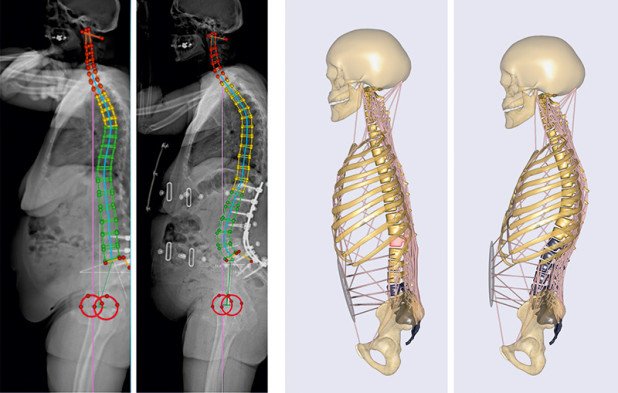
Right: analysis performed by the computer program (AnyBody modelling and simulation software) comparing the situation before and after surgery
Another piece of the puzzle in our search for a cause
The study shows that any spinal deformity remaining after the operation is linked to higher mechanical loads in the adjacent vertebrae above the fused section of the spine. However, it is still not entirely clear whether these increased mechanical loads are in fact the main cause of mechanical complications, although this is already being investigated in further studies.
Reference
Ignasiak D, Behm P, Mannion AF, Galbusera F, Kleinstück F, Fekete TF, Haschtmann D, Jeszenszky D, Zimmermann L, Richner-Wunderlin S, Vila-Casademunt A, Pellisé F, Obeid I, Pizones J, Sánchez Pérez-Grueso FJ, Karaman MI, Alanay A, Yilgor Ç, Ferguson SJ, Loibl M; ESSG European Spine Study Group. Eur Spine J. 2022 Dec 17. doi: 10.1007/s00586-022-07477-4. Online ahead of print.PMID: 36526952
A successful collaboration between Schulthess Klinik, the European Spine Study Group (ESSG) and ETH Zurich
The ultimate aim of all the studies carried out by the European Spine Study Group is to improve treatment for adult patients with spinal curvature by enabling the best treatment options to be chosen on a scientific basis for each individual case. The goal is always to achieve the best possible results while keeping the risk of complications low. Schulthess Klinik has been a member of the ESSG, along with establishments in Barcelona, Madrid, Istanbul and Bordeaux, since 2012. Together with the ESSG’s US-based counterpart, the International Spine Study Group (ISSG), we maintain the world’s foremost prospective database for ASD treatment. Our involvement in the ESSG is partially financed by the Wilhelm Schulthess Foundation’s Research Fund.
Find out more about our work as part of the European Spine Study Group and how you, too, can get involved in shaping the future of medicine:
We have cultivated a close partnership with ETH Zurich for some years now, whether that involves running practical courses for up-and-coming medical professionals, holding a range of lectures for students or working on joint research projects with our various specialist departments.
This study involved the Laboratory for Orthopaedic Technology , which focuses particularly on developing technologies that offer an insight into the biomechanics of joints and tissue and into movement and load patterns. Its work is geared towards gaining an understanding of disease processes and developing new treatment options.
By joining forces, Schulthess Klinik, the European Spine Study Group and ETH Zurich have created a valuable pool of knowledge and expertise, which patients can benefit from most of all.
